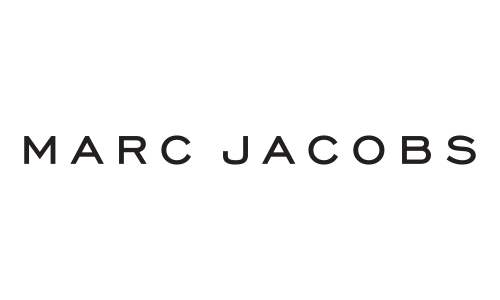The Marc Jacobs logo may look somewhat generic, yet this approach seems wise for a large brand that has a lot of plans for the future.
Meaning and history
Marc Jacobs was founded in 1984 by American designer Marc Jacobs in New York City, initially launched as a women’s clothing line. The brand achieved major milestones, including Jacobs winning the CFDA Perry Ellis Award for New Fashion Talent in 1987, becoming creative director at Louis Vuitton in 1997, and launching the iconic Marc by Marc Jacobs diffusion line in 2001, known for its youthful, accessible style.
Currently, Marc Jacobs is a global luxury fashion brand under the LVMH group, offering apparel, accessories, and fragrances, with flagship stores worldwide. It continues to thrive as a leader in high-end fashion, maintaining a strong presence in both couture and ready-to-wear markets as of 2025.
1984 – Today
You can hardly say there is something distinctive in the typeface used for the wordmark. It looks rather rounded and friendly, like hundreds of other typefaces. Also, it is perfectly legible. It is impossible to say anything about the fashion house and its style judging from the logotype.
It is not a bad thing, though.
All of us know that fashion is pretty changeable and trends follow one another rather fast. Things consumers want change over time. So, choosing a neutral logo can be an advantage for a brand that is open to endless style possibilities and to the consumers’ demands.
Interestingly, you may come across an older version of the emblem featuring a serif type. The reason why it was replaced seems obvious: modern-day design prefers simpler, more utilitarian sans serif fonts.
Font
The type featured on the Marc Jacobs logo looks very much like the Engravers Gothic font. It has been slightly customized. The space between the letters is wider, while the letters are somewhat bolder than in the regular weight of this type. The lines do not reach the width of the Engravers Gothic Bold font, either.
Colors
Similar to most other fashion brand logos, this one sticks to the black-and-white color scheme, which fits any background.
Emblem controversy
In early 2019, representatives of rock band Nirvana sued the designer for placing the iconic smiley face logo on his products. It was used on a T-shirt, a sweater, and socks from the reissued Bootleg Redux Grunge collection. The copyright infringement was not made by chance as the marketing campaign referenced a Nirvana’s song.









